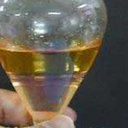Dysregulation and Dislocation of SFPQ Disturbed DNA Organization in Alzheimer's Disease and Frontotemporal Dementia.
Słowa kluczowe
Abstrakcyjny
SFPQ (Splicing factor proline- and glutamine-rich) is a DNA and RNA binding protein involved in transcription, pre-mRNA splicing, and DNA damage repair. SFPQ was found dysregulated in a few tauopathies such as Alzheimer's disease (AD) and frontotemporal dementia (FTD). In addition, knock-down of SFPQ induced FTD-like behavior in mouse. To confirm the role of SFPQ in AD and FTD, we analyzed the brain sections from the AD and FTD brain samples with SFPQ upregulation and dislocation. Specifically, we observed SFPQ dislocated to the cytoplasm and nuclear envelopes, and DNA structures and organizations were associated with these dislocation phenotypes in AD and FTD brains. Consistently, we also found decreased DAPI intensities and smaller chromocenters associated with SFPQ dislocation in nerural-2a (N2a) cells. As the upregulation and hyperphosphorylation of tau protein is a hallmark of AD and FTD, our study sought to investigate potential interactions between tau and SFPQ by co-transfection and co-immunoprecipitation assays in N2a cells. SFPQ dislocation was found enhanced with tau co-transfection and tau co-transfection further resulted in extended DNA disorganization in N2a cells. Overall, our results indicate that dysregulation and dislocation of SFPQ and subsequent DNA disorganization might be a novel pathway in the progression of AD and FTD.



